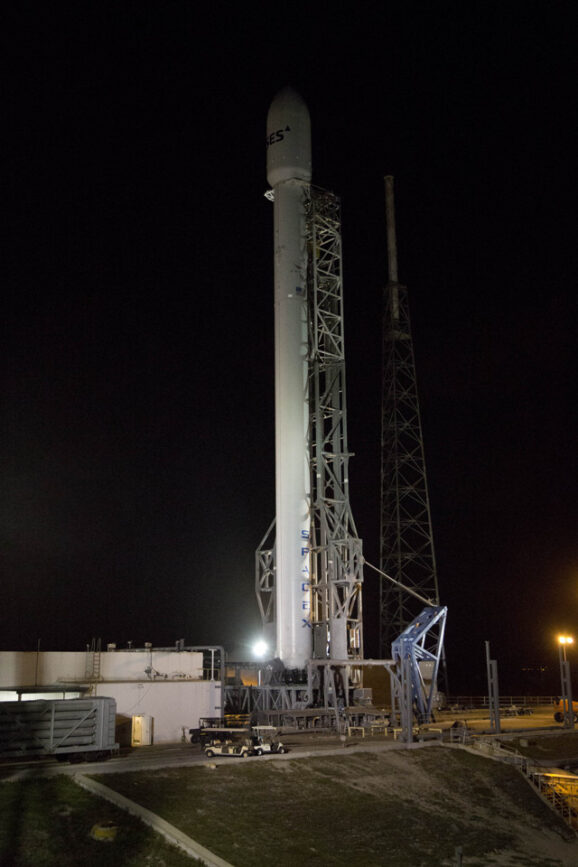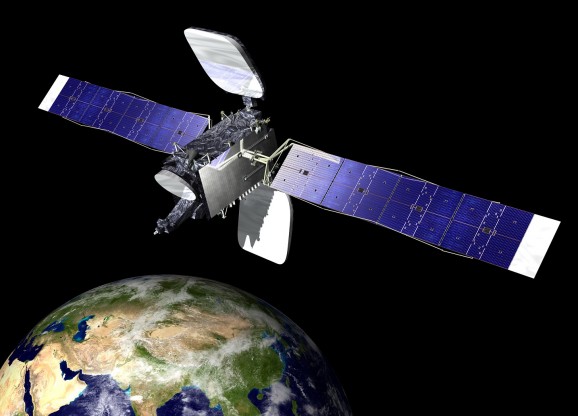3, 2, 1 — Uh Oh, SpaceX Reschedules Falcon 9 Rocket Launch For Thursday
This article is more than 2 years old

Earlier today, SpaceX’s website was counting down, stopping, then counting down again, then stopping again, scrubbing the launch that was scheduled to take place at approximately 5:37pm EST. On Thursday, SpaceX will again attempt to launch a Falcon 9 rocket for a GEO Transfer Mission. The rocket, which will launch from Florida’s Cape Canaveral Air Force Base, will put an Orbital Sciences SES-8 satellite, designed to support Southeast Asian communications needs for about 15 years, into a geostationary transfer orbit. Then, about a half-hour after launch, the Falcon 9 will deliver the satellite into geostationary orbit at about 22,000 miles above Earth, roughly 25% of the way to the moon. Many launchers deliver a satellite in two phases, or burns, depending on how long and how much power it takes to reach the first apogee. The transfer to geostatic orbit phase is usually performed via solar power, which reduces overall costs. This launch is SpaceX’s first attempt at putting a communications satellite in orbit.

The Falcon 9 was the first commercial space vehicle to deliver a spacecraft to the International Space Station, which it has now done three times, shuttling cargo back and forth from the station. At only 250 miles above Earth, the ISS is considerably closer than the current target. This will be SES’s 55th satellite to enter orbit over Earth, and their choice of SpaceX’s Falcon 9 as the launch vehicle is a huge vote of confidence for Elon Musk’s company, which is poised to lead a burgeoning commercial space flight industry. The chief technology officer for SES says that a successful SpaceX launch will “really shake the industry to its roots.” SES has already contracted SpaceX for three more launches at a cost of roughly $55 million each.
SpaceX made news with its reusable launch vehicle called Grasshopper, which uses first-stage Falcon 9 rockets to achieve a vertical lift and a precision landing in the exact same spot as take-off. The previous version of the Falcon 9 rocket had a successful September 29 test launch in which it brought the Canadian space-weather satellite CASSIOPE into orbit, but the optional restate of the upper stage engine didn’t activate. SpaceX added insulation to the rocket after determining that an igniter line had frozen, and they and SES are confident that the problem has been resolved. Unlike other Falcon 9 launches, SpaceX won’t try to recover the rocket’s booster. Instead, a ship positioned in the Atlantic Ocean will harvest information about the booster’s reentry into the atmosphere to help facilitate booster recovery in the future — perhaps even as soon as their late-December launch.
Falcon 9 standing tall on the pad, ready to launch #SES8 to 80,000km orbit. Watch @ 5pm: http://t.co/wytY3mnBf1 pic.twitter.com/C3RryK0kRz
— SpaceX (@SpaceX) November 25, 2013
The Falcon 9 is a two-stage rocket with nine first-stage engines, and even if an engine shuts down, it can still safely carry out a mission. While it has only delivered non-human cargo thus far, the Falcon 9 will be important for the future of manned spaceflight. The Dragon spacecraft built to accompany Falcon 9 was designed to carry humans and, if Elon Musk has his way, the Falcon 9 might bring humans to Mars.
SpaceX engineers began troubleshooting a stage-one locks tank vent at around 5:35pm, and even though they appeared confident that they would fix the problem within the flight window, at just under four minutes in the restarted countdown, the mission was scrubbed due to another problem, which appeared from the webcast to be related to an air pressurization system. SpaceX will undoubtedly release more information about what happened later. Hopefully, Thursday’s launch will go off without a hitch. But one thing’s for sure — better to delay the launch than to wish you had.












